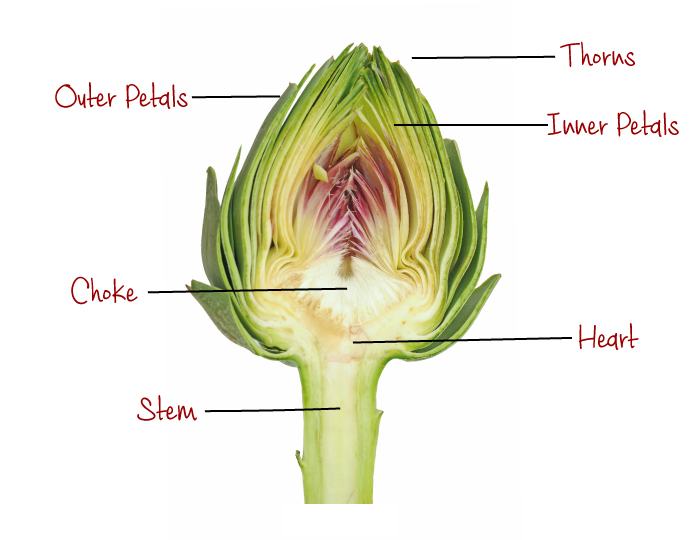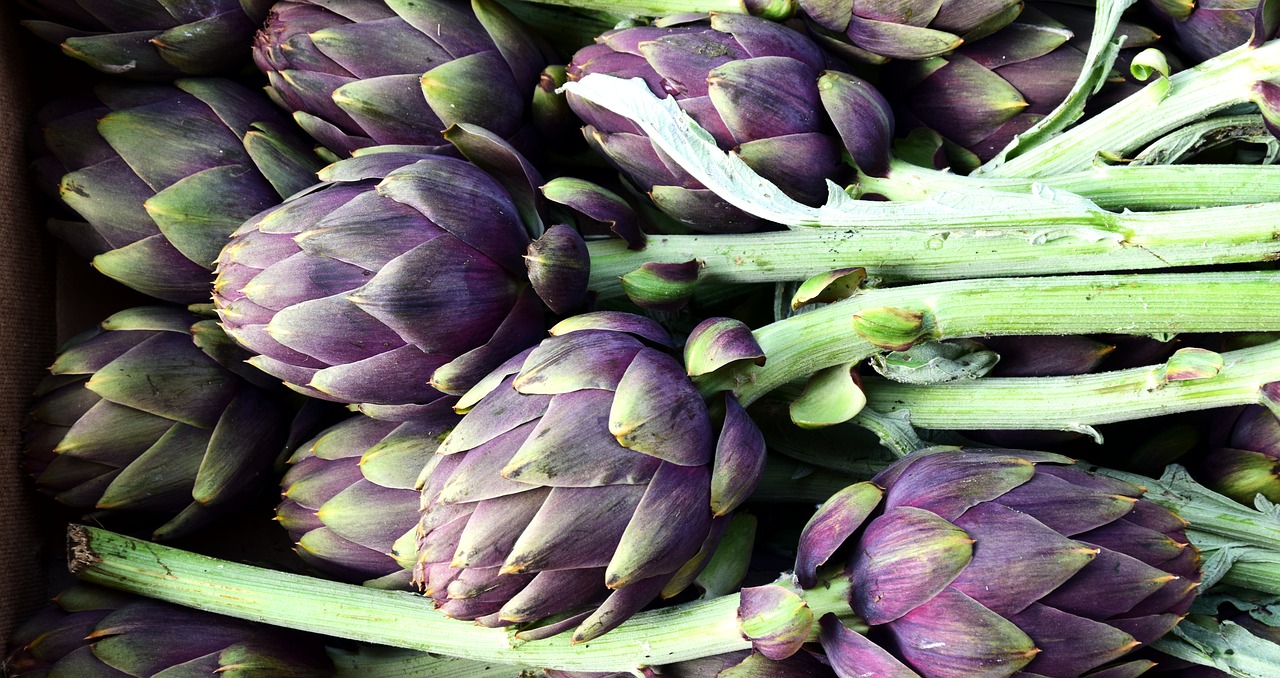The featured food this month is the artichoke! I figured something green since St. Patrick’s Day is in March and broccoli is too obvious 😉

Artichokes are a species of thistle believe it or not. The artichoke is the bud of the plant and is picked before it reaches full maturity. If the bud actually blooms, it develops into a blue-violet flower.
The artichoke is made up of the outer petal, the inner petals, the center choke, the heart and the stem.
Photo credit – The Kitchen Journals
Artichokes contain many antioxidants in the form of phytonutrients including but not limited quercitin, rutin, anthocyanins and gallic acid. Many of these compounds are anticancer and also help promote healthy aging. 1 cup of artichoke hearts has more antioxidants than cranberries, blueberries, red wine and chocolate!
They are also an excellent source or fiber and vitamin C and a good source of magnesium, folate, potassium and phosphorous. In fact, 1 medium artichoke has 10 GRAMS of fiber! Considering most Americans need 20-35 grams a day, an artichoke packs a powerful, fiber-packed punch.
There are lots of ways to prepare artichokes including steaming, boiling, baking and grilling; for detailed demonstrations and tutorials, click here. Many recipes call for some not-so-healthy condiments like butter and full fat mayonnaise. The best way to eat any vegetable is as plain as possible with added flavors coming form lemon, pepper and other herbs. A tasty artichoke needs little to no extra help and this recipe is a great example of how to serve this veggie.
Artichokes heart make a great topping for salads or mixed with a protein like chicken or shrimp in a stir fry. When purchasing canned or prepared artichoke hearts, look for them canned in water or brine instead of oil.
Today is the first official day of spring, which means BBQ season is here. Throw an artichoke on the grill and enjoy!








